Malaysia
is getting more urbanised and motorised today. Our towns and cities are now
planned with the needs of cars in mind instead of people’s needs — easily half
of the space in our cities is now used for cars. This leads to urban sprawl,
which causes even more noise and air pollution that lowers our quality of life.
Such senseless mobility that involves not only high costs, but
also speed — that leads to more stress, more road bullies, and more road deaths
and injuries — are unhealthy, bad for our quality of life as well as is
economically and environmentally unsustainable.
What the country needs now is a less disruptive mode of
transport, one that reduces environmental pollution, is healthier for all,
calms the chaos on our roads, and will connect people with people, and people
with nature.
We need a cheap yet efficient alternative transport that will
slow us down, not stress us out, one that is economically sustainable and will
lead to a better quality of life for all Malaysians.
We need to bring back the bicycle. Yes, the bicycle — that good
old cheap-to-operate pedal-power machine our ancestors depended on to take them
places, that now no longer has a status on our roads or a place in our
transport planning.
All over the world today, bicycles are getting much-deserved
reconsideration as a solution to basic problems in transit, community, and the
environment. That’s not surprising because the bicycle is actually the world’s
cleanest, healthiest, most economical and most efficient form of transport.
.Statistics on car ownership in Malaysia indicate that Malaysia
is shifting more and more towards private car use. Over the past 15 years, 4.71
million new cars have been registered for private use in the country. That
translates into a private car penetration rate of 18%, or 1 car for every 5.54
persons. In 2006 alone, over half a million cars were sold in the country.
The General Insurance Association of Malaysia (PIAM) revealed in
September 2004, that our local car population has grown significantly — from
3.3 million private cars in 1997 to over 5.4 million private cars in 2003.
More recently, according to Road Transport Department (JPJ)
director-general Datuk Emran Kadir, the number of vehicles in the country has
increased to 15.2 million up to June 2006, from 7 million in 1994 (Star, 3
October 2006). “The number of drivers also doubled to nearly 12 million this
year compared to 6 million in 1994,” he said.
The rise in motorised vehicles, especially car use, has led to
worsening road congestions from traffic jams and rising road casualties from
motor vehicle accidents. Road accident is one of the major causes of death and
injury in Malaysia.
According to Transport Minister Datuk Seri Chan Kong Choy, 6,188
people were killed in road accidents last year (Star, 26.9.06).
According to PIAM, in tandem with our rising car population, the
numbers of road accidents jumped from 215,632 cases in 1997 to 298,653 cases in
2003.
“Despite the many efforts undertaken by the Government to
enhance road safety, over 300,000 cases of road traffic accidents were reported
in 2004 alone compared with 290,000 cases in 2003, at the average of 895
accident cases involved per day in 2004 throughout the country.
“These accidents have resulted in the loss of 6,000 lives last
year. This phenomenon is said to consume an estimated sum of RM6 billion … due
to loss of productivity, medical costs, management costs, property damage and
others.” (Member of Parliament Dr Wee Ka Siong in a statement at the plenary of
the 60th session of the United Nations General Assembly, 25 October 2005)
With the increasing costs of petrol today, motorised vehicles
like cars and motorcycles have also become costlier to use. Motor vehicles are
also costly to maintain as the consumer has to pay substantially for road tax,
licences, parking fees and vehicle servicing as well as repairs for wear and
tear, all of which don’t come cheap.
Motorised transport also eats into the country’s coffers as
roads, highways and car parks (not to mention car service and car-wash centres)
all have to be built to accommodate it. Motorised vehicles also use up a lot of
space — at present easily 40-50% of public space in our cities is utilised by
such vehicles.
The infrastructure for bicycles, on the other hand — such as
roads and parking facilities — is less expensive to build and less
land-intensive than that for cars. In Denmark, for example, cycle paths are so
much cheaper to build and maintain that some cities have gone to extremes to
encourage them. The city of Copenhagen, for example, resorted to providing a
fleet of free bicycles to its residents.
Bicycles are not only handy in densely populated urban areas,
they also have tremendous potential in rural areas. Where roads are poorly
maintained or non-existent and cars are expensive, cycling may be the quickest
and most affordable way to travel.
Bicycles do not contribute to air or noise pollution, and they
reduce traffic congestion. They also offer a chance for people to improve their
physical fitness at a time when obesity is at record levels.
What has also been discovered worldwide is that accident rates
have dropped wherever cycling has gained momentum, as cars are forced to slow
down as they become more accustomed to sharing the road. According to an
official in London’s transport office, “the number of accidents has roughly
fallen in half as the number of cyclists has doubled”.
The bicycle is particularly useful for moving people and goods
for short-distance travel. It can also help the country achieve better social
cohesion as cycling (which slows us down) connects people as well as connects
the cyclist with nature, unlike driving or riding a motorbike (which operate at
a higher speed), which is a senseless mobility as it does not foster
interconnectedness among road users.
Bicycle-friendly streets are vital public amenities that help
promote social interaction, besides preventing pollution and enabling people to
engage in physical exercise that benefits health.
Although this poor man’s transport is the healthiest mode of
transport, its usage has unfortunately declined in Malaysia, to the extent that
the bicycle is now used only for recreation and as a mode of transport for the
poor.
This is mostly due to the single-minded pursuit of motorised
transport and its infrastructural development by our authorities, as an
important component in our national development. The lack of proper cycle
paths, and safety issues (like the rise of air pollution from motorised
vehicles, and risks of being knocked down) all contribute to the demise of the
bicycle in Malaysia.
Lack of imagination and awareness on the use of bicycles as a
transport solution on the part of our policy-makers also demote the status of
bicycles.
CAP calls on the Government to consider promoting the bicycle,
which is cheap, non-polluting, small and silent — an excellent device to unclog
modern roads — as a replacement to cars on our roads, and in the process
effectively transform our present road snarls with more miles, and smiles.
Car travel is getting slower
As car use expands and as people move in droves to cities,
traffic congestion becomes worse and traveling by car becomes slower. Many
major cities around the world today are discovering that after a certain point,
more cars actually mean less mobility. In London just a few years ago, the
average speed of a car was roughly the same as that of a horse-drawn carriage a
century ago! In Bangkok, each year the average motorist there spends the
equivalent of 44 working days sitting in a car going nowhere. (Source: Earth
Policy Institute, 2002)
According to the Amsterdam-based labour activists centre, the
Transnational Information Exchange (TIE), present-day notions of increased
mobility with cars are, to a large extent, artificially created.
It gave the following example: “In the Berlin of the 1920s, the
average person made 900-1,000 trips a year, for work, shopping, leisure or
other purposes. 90% of these trips were done on foot, by bicycle or tram and
underground. The number of trips made by the average person has remained the
same, but today 80% is done by car in the same city!”
Increasing car use today has been attributed to: an ever
increasing push for the “need of the car” encouraged by car manufacturers, the
design of modern-day infrastructure specifically for automobile mobility, and
the influence of advertising that reinforces maufacturers’ ideology of the car.
Bicycles better than cars
The bicycle is an efficient means of transportation. In fact,
cycling is more efficient than any other method of travel. The bicycle is the
most efficient machine ever created: converting calories into petrol, a bicycle
gets the equivalent of 3,000 miles per gallon.
In a typical journey in London for example, cycling is faster
than the car, and is also faster than public transport, taxis or walking.
Cyclists can easily cover 5 miles in half an hour and be confident that they’ll
arrive on time. Car or bus journeys take longer and depend on traffic, or
irregular bus services.
In a city like Ontario, Canada, where the average car speed is
30 km per hour, it has been observed that for trips of less than 5 km, bicycles
average close to the same speed as cars in getting one to one’s destination
because they have more available routes and avoid delays to find parking. Cars
waste a lot of time racing from traffic light to traffic light. As a result,
bicycles often end up at intersections behind cars, just as the light is turning
green.
As pointed out by Winfried Wolf, author of the book Eisenbahn
und Autowahn (Railways and Automania): “Traffic systems should be evaluated by
looking at the time you need for a journey itself, for buying the means of
transport, for maintaining and cleaning it, and for earning the money you need
for the trip. When you take all this into account, a car driver moves at the
same speed as a cyclist.
Bicycles are in fact, better than cars for many reasons. For
one, it provides phenomenal fuel efficiency. It’s been called “the most
efficient form of transportation ever invented”.
“People of average fitness can achieve 20 km per hour with an
average power input of about 1/10 horsepower (or 75 watts). This level of
exertion is minimal and can be kept up for hours.
It’s thus no surprise that Government authorities around the
world are increasingly adopting the bicycle as a solution to urban transport
problems (see separate story on “Cities Around the World Are Using the Bicycle
Solution”) — and for many other good reasons.
The bicycle is a cheap, simple, reliable and sensible mode of
transport
-- Bicycles require no road tax, no licensing, no insurance, and
no fuel bills — and is cheap to manufacture and maintain. Increased cycling
will thus reduce household, and national, budgets devoted to car use.
-- In large cities today, it has been found that motorised
traffic is now slower than it was in horse-drawn carriage days. The bicycle is,
in fact, faster for modern-day travel. It has been shown that for distances of
2 miles or less, a bicycle has a clear advantage over a car or public transport
(Commuter Challenge, Strathclyde Regional Council, UK). For distances of 5-7
miles, cycling is still faster than a car. During rush hour, a bicycle is about
twice as fast as a car (British finding).
-- The bicycle is practical for man. “Man on a bicycle can go 3
or 4 times faster than the pedestrian, but uses 5 times less energy in the
process. He carries 1 gram of his weight over 1 km of flat road at an expense
of only 0.15 calories. The bicycle is the perfect transducer to match man’s
metabolic energy to the impedance of locomotion. Equipped with this tool, man
outstrips the efficiency of not only all machines but all other animals as
well.” (Ivan Illich, in “Energy and Equity”, 1978)
-- A bicycle does not pollute (and is also a lot quieter),
unlike cars, which produce millions of tons of poisonous fumes and are the main
source of air pollution in Malaysia. Cycling can thus help maintain cleaner air
for breathing, and minimise noise pollution.
They are also much safer for pedestrians.
-- Bicycles take up little space on the road, unlike cars, for
which billions of ringgit of public money has to be spent on constructing
highways, flyovers and multi-storey car parks. 20 bicycles can be parked in the
same space taken up by 1 car. A bicycle is also small enough to be parked
anywhere, so one saves on expensive car park bills.
Cycling thus saves energy and space, as well as protects one
from the associated deleterious effects of automobile usage.
Short trips ideal for bicycles
Many trips in our cars today — eg: to the bank or shop nearby —
are short distances. Short trips guzzle fuel and cause wear and tear on our
car’s engine, not to mention the brakes, clutch, etc. That’s because for such
kind of repeated short trips, much of our car’s engine wear is due to a high
number of starts per mile driven. Driving short distances and stopping before
the engine gets a chance to warm up and circulate the oil creates raw
metal-to-metal wear and tear. It is well known that cars continuously driven at
highway speeds take on far less wear and tear for the overall mileage than
short-distance, stop-and-go, around-town driving.
Car trips over short distances are also responsible for much of
the toxic fumes in exhaust, because catalysers are not very efficient until
after 3-4 km (2-2.5 miles). People who travel 5 km to work by bicycle instead
of driving a car cut their carbon dioxide emissions by 0.7 tons a year (Source:
Swedish Society for Nature Conservation).
“Bicycles should be encouraged as the most efficient transport
mode for short trips in cities of all types and income levels, particularly for
trips too long for walking and too short for express public transport services
… (E)fficient bicycle use is generally from 600 or 800 meters to 5 or 7 km,”
says Michael Replogle, currently Federal Transportation Director of
Environmental Defense Fund, US (Source: “Non-Motorised Vehicles in Asia:
Lessons for Sustainable Transport Planning and Policy”, 1991).
Bicycles are also significantly less energy intensive. A 1991
survey showed that a cyclist can travel 1,600 miles on the equivalent energy of
1 gallon (4.55 litres) of petrol.
Bicycles should be encouraged as the most efficient transport
mode for short trips in cities of all types and income levels, particularly for
trips too long for walking and too short for express public transport services.
To promote cycling and
encourage more people to commute by bicycle, the Government can implement
policies that benefit cyclists.
The following are
some steps that have already been taken in other countries to promote
bicycle-friendliness and cyclist safety, which the Malaysian government can
also adopt:
Officially Promote Bicycle Use
-- CHANGE the current mindset that makes the car the priority.
For this, it is necessary to retrain our town planners to work towards
integrating bicycles on our roads and highways.
-- DISCOURAGE car use among the public. This can be done with
legislative measures, such as reducing motorised vehicles’ speed limits.
Studies by the municipality of Amsterdam have shown that “push policies” such
as discouraging car use are more effective than “pull policies” such as
improving bicycle facilities, in increasing bicycle use.
-- CONDUCT “share the road” education campaigns to encourage
more peaceful coexistence between bicycles and cars.
-- ALLOCATE more funds to create a bicycle-friendly transport
system here and to make our road conditions conducive for mass cycling, as has
been done in other countries.
Set Up Bicycle Facilities
-- CREATE bicycle trails (for people to cycle for recreation)
and designated street lanes for bicycles (for regular commuters).
-- INCLUDE safe bicycle lanes on all new roads and highways.
-- INTRODUCE road designs that promote a safe and well-lit
environment for cycling. This should include traffic-calming measures to reduce
automobile speeds.
-- MODIFY existing road curbs to accommodate bicycle-pedestrian
paths. (Cycle paths are so much cheaper to build and maintain than roads that
some cities have gone to extremes to promote them. Copenhagen, for example,
provides a fleet of free bicycles for its city folk’s use.)
-- DESIGN bicycle route maps, once proper bicycle paths are in
place.
-- HAVE clear bicycle signage (eg: eye-catching green vinyl
markers) on all bicycle routes, and at vital road intersections.
-- PROVIDE safe, convenient and cheap (or even free) bicycle
parking spaces for cyclists. One of the easiest and quickest investments is the
simple bicycle rack, either randomly scattered in small units (as in Paris), or
centralised in large parking lots (as in many Dutch, German and Chinese
cities).
Ensure Cycling Is Safe
-- PROTECT cyclists’ safety. This can be done, for example, by
restricting the use of motorised vehicles on the road during peak hours. One
way is via tax. For example, since central London’s implementation of a
congestion tax in 2003, bicycle and motorcycle traffic have increased by 15%,
while accidents involving cyclists have fallen by 8%.
-- DRAW up laws to protect cyclists from bigger and heavier
vehicles on the road. In the Netherlands and Denmark, 2 countries in the world
that have come closest to restoring the bicycle to its pre-auto role, cyclists
are protected by an extensive legal framework and are fully recognised users of
the road.
-- ORGANISE a bicycle helmet safety campaign and create relevant
laws similar to what have been done for motorcycle helmet safety, to protect
cyclists. To ride a bicycle is not free of risk, any more than other modes of
transport are free of risk. Appropriate headgear is important as bicycle riders
who go without head protection are roughly 3 times more likely to suffer head
injuries in a crash than those who wear a helmet. A cyclist who sustains a head
injury is also some 20 times more likely to die than a rider who suffers other
kinds of injury.
The
humble bicycle could be a key to our long-term survival — in terms of health,
environment and economics. CAP’s research shows that reviving bicycle use here
would benefit both the nation and the people. Here’s the evidence for health.
A recent Malaysian Shape of the Nation survey showed that
Malaysia has the most number of fat people in the Asean region. In fact, the
number of fat people here exceeds that in many developed countries, including
Germany and France (NST, 29 September 2006).
In the last 10 years, the number of fat people has more than
doubled, resulting in more Malaysians falling ill and diseases such as
hypertension and diabetes shooting up. Today 54% of the adult population is
either obese or overweight compared to only 24.1% 10 years ago.
The latest survey showed that 48% of Malaysian men and 62% of
Malaysian women are fat. By contrast, in Singapore, about 24% of men and 48% of
women are fat.
Many Malaysians are thus at risk of getting cardiovascular
disease, hypertension, lipid disorder and diabetes mellitus. The same study
found that 13.5% of the adult population here is diabetic, compared with only
8.3% in 1996.
Last year’s figures showed that more than 10,000 people in
Malaysia died each year from diseases linked to hypertension like stroke, heart
attack and renal failure, including about 6,000 deaths due to coronary heart
disease (NST, 7 April 2006).
3 million suffer from high cholesterol while another 2.1 million
have diabetes.
Every day, about 110 Malaysians suffer a stroke, the country’s
third killer after cancer and heart attack. More than 40,000 new cancer cases
are reported annually.
1 in 3 Malaysians aged 30 and above suffers from hypertension
while only 6 out of every 100 have their blood pressure under control.
Malaysian Children Growing Fatter & Sicker
Malaysian children are also growing fatter. A recent study of 11,264 schoolchildren between the ages of 6 and 12 in Peninsular Malaysia in 2002, found that 1 out of every 6 pupils in the country is fat. Malaysian children are thus worse off than children in other Asian countries, such as the Philippines where 1 out of every 20 pupils is overweight.
Overweight children face similar health risks as adults. And the
current scenario is not promising.
According to Universiti Malaya Medical Centre’s cardiology
division head Prof Dr Wan Azman Wan Ahmad, more young people were getting heart
disease compared to 30 years ago. One-third of heart patients in the
country are under 45 years old (Star, 30 July 2006).
“30 years ago, heart patients were aged between 50 and 55 for
males and 60 and 65 for females. But today, we get patients as young as 15.”
Encourage Children to Cycle
Many youngsters today lead a sedentary life and spend increasing
amounts of their leisure time watching TV or playing on the computer. Unlike
children of generations ago, modern Malaysian children are also restricted from
exploring their surroundings on foot or by bicycle due to safety reasons,
including road safety. Young people’s mobility today is also becoming more
car-based, with fewer cycling and walking, especially to school.
As children are increasingly transported by car, traffic danger
increases, conditions for cycling or walking (eg: to school) are made
increasingly unpleasant and fewer children walk or cycle to school. This serves
again to discourage cycling and leads to greater car use, which provokes
parents into further thinking that roads are too dangerous, hence a vicious circle
is created.
Research has shown that independent mobility helps make children
more active and self-confident, and helps them learn vital road sense. Research
has also shown that independent mobility and being able to be outdoors without
supervision is essential for children’s personal and social development.
The Government should waste no time in making our roads more
bicycle-friendly and encouraging children to cycle where distances between
homes and schools are short, eg: less than 3 km.
There are many benefits from this move, among them:
-- Cycling is a good way to encourage children to do regular
exercise. Regular cycling increases activity levels of children. The World
Health Organisation recommends that young people should aim to be active for
over 1 hour per day. Children who do not exercise regularly risk becoming
overweight or even obese, with all its attending health risks.
-- Encouraging cycling in youngsters provides opportunity to
modify travel behaviour and alter the travel habits of the next generation.
Patterns and habits of adult life are formed during childhood. Research
suggests that when children are encouraged to cycle from a young age, they
often continue to cycle as adults.
-- Promoting cycling to school can reduce traffic on the roads
and helps improve our children’s quality of life.
Many developed countries today have adopted successful
cycle-to-school schemes that benefit their young and their countries. In
Odense, Denmark, numerous changes were made to the traffic environment so as to
improve it for children in the “Safe Routes to School” project.
The project was one of several features, which within 20 years,
changed Denmark’s child casualty rate from the worst to among the best in
western Europe. Measures included slow-speed areas, road narrowings, traffic
islands and combined foot and cycle paths. This resulted in an 82% reduction in
accidents.
In Flanders, Belgium, bicycle pooling, in which children cycle
to school in small groups under adult guidance, has been introduced.
In Munich, Germany the “Sustainable Mobility for Kids”
(MOBIKIDS) project, introduced measures such as drop-off areas for children in
dedicated zones, “walking buses” and “cycle trains” (adult-guided time-table
travel to school).
Similar measures can be adopted here before cycling is
officially promoted to children.
Cycling Improves Health
By cycling, Malaysians — both children and adults — will be
incorporating exercise into their daily life, and in the process, improve their
health.
The following extract from the book, Redesigning Urban Transport
by the Earth Policy Institute, puts it well: “The bicycle is not only a
flexible means of transportation, it is an ideal way of restoring a balance
between caloric intake and expenditure ... Regular exercise of the sort
provided by cycling to work reduces cardiovascular disease, osteoporosis, and
arthritis and strengthens the immune system.
“Millions of people pay a monthly fee to use a fitness centre,
which they often drive to, where they ride stationary bikes, trying to achieve
the same benefits.”
Health experts say that to stay healthy, we need at least 30
minutes of exercise a day. This will help cut one’s risk of heart attacks, high
blood pressure and other illnesses. Cycling, which can burn up to 700 calories
in an hour, is a good way to stay healthy.
Cycling is also the perfect prescription for losing weight and
getting fit — and thus prevent obesity, which is on the rise in Malaysia.
And because a cyclist breathes fewer fumes than those in cars or
buses, they are less likely to suffer from respiratory illnesses. Research
shows that people who cycle are actually better off in pollution terms than
people in cars, taxis and buses. (People in cars are exposed to 3-4 times more
air pollution than pedestrians or cyclists!)
Cycling
is good for health. For one, it reduces death risks. In Denmark, a 15-year
study associates cycling with a 40% reduction in mortality for both sexes over
all ages (Archives
of Internal Medicine, 2000).
Basically, a person who cycles as a commuter consistently can
expect, according to a report released in a 1986 issue of the American Journal
of Public Health, to live longer than those who don’t.
Cycling can also give you a high fitness level. The average
daily cyclist has the fitness level of someone 10 years younger.
To summarise, cycling is good for your overall health in the
following ways:
1. REDUCES weight when done regularly. Cycling increases calorie
consumption and raises the metabolic rate, which can help to lose weight.
2. IMPROVES control of blood pressure by 10/8 mmHg in patients
with hypertension (Journal of Cardiovascular Pharmacology, 1995).
3. LOWERS resting heart rate. A high resting heart rate has been
linked to increased death from cardiovascular disease and increased risk of
sudden death after a heart attack in healthy individuals.
4. IMPROVES HDL (good)/ LDL (bad) cholesterol ratio. If the
ratio of LDL to HDL is too high, that means your blood is being loaded with
cholesterol faster than the HDL cholesterol can remove it, which means excess
cholesterol is building up inside the tissues and arteries. Eventually hardening
of the arteries (atherosclerosis), which causes most heart attacks, takes
place.
5. PREVENTS heart disease. Regular cycling halves the chance of
suffering from heart disease, one of the top 3 killer diseases in Malaysia. A
study reported a 50% reduction in fatal and non-fatal heart disease in civil
servants who cycled over 20 miles/week.
6. BENEFITS cardiovascular health. Cycling also reduces the risk
of stroke (a major killer in Malaysia) and coronary heart disease. In a study,
regular exercise on a static cycle machine in patients with heart failure
improves cardiac function (Lancet, 1990).
7. REDUCES diabetes. Exercise has been to shown to lead to a
reduction in the rate of diabetes mellitus. In patients with diabetes mellitus,
regular exercise leads to an improvement in control of blood sugar and can help
to prevent the onset of Type 2 diabetes mellitus.
8. REDUCES cancer. Physical activity has been shown to be
associated with reduced rates of cancer (eg: bowel cancer, and possibly also
breast cancer) (European Journal of Epidemiology, 2000).
9. REDUCES cholecystectomy (surgical removal of the gallbladder)
rates in women (New England Journal of Medicine, 1999).
10. BENEFITS pregnancy. Cycling when pregnant improves
cardiovascular fitness. And regular exercise may ease childbirth (Bicycling,
June 1988).
11. REDUCES anxiety, depression and stress (Preventive Medicine,
1988).
12. TRAINS respiratory muscles (Report of the Royal College of
Physicians, London; 1991).
13. IMPROVES muscle strength. Cycling is a non-weight bearing
activity and regular cycling leads to improved muscle strength and improved
mobility and coordination (Allot & Lomax and the Policy Studies Institute,
1998).
Source: Consumers Association of Penang


































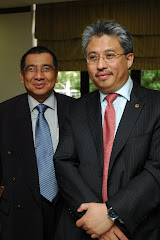
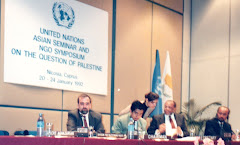
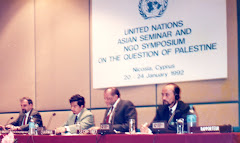
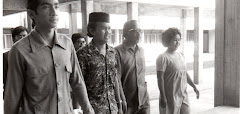

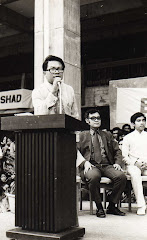


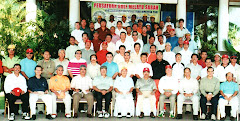





No comments:
Post a Comment